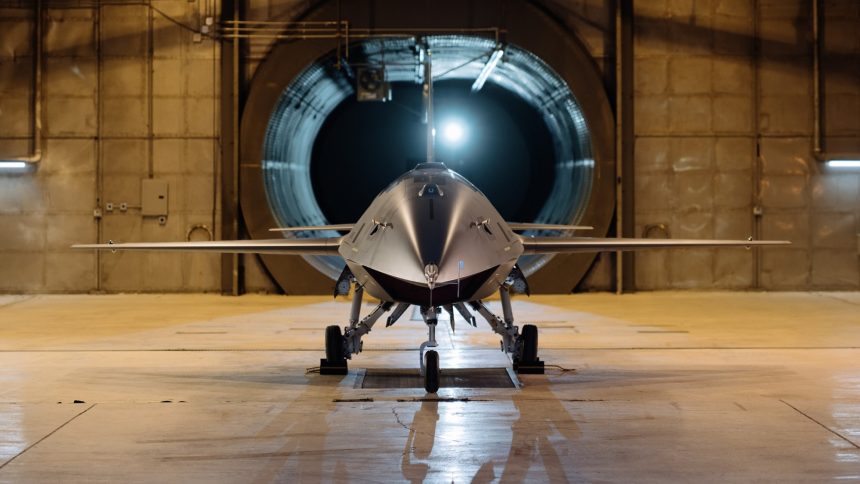The U.S. Air Force announced the start of the ground testing of the YFQ-42A and YFQ-44A, and selected Beale AFB to host a CCA Aircraft Readiness Unit.
The U.S. Air Force Chief of Staff Gen. David Allvin announced that the service has started the ground testing of the YFQ-42A and YFQ-44A production representative test vehicles as part of the Collaborative Combat Aircraft (CCA) program. Together with the announcement, the service also released two images and a short video to unveil Anduril’s YFQ-44.
“Starting ground tests is a key milestone for the CCA Increment 1 program,” said Gen. Allvin. “This phase bridges the gap between design and flight, reducing integration risks, boosting confidence, and laying the groundwork for a successful first flight and eventual fielding to the warfighter.”
Ground testing is officially underway for our Collaborative Combat Aircraft program! This is a huge milestone and another step toward first flight and rapid delivery to our warfighters… These unmanned fighters are going to be badass! (1/3) pic.twitter.com/HiuWMzmcc7
— General David Allvin (@OfficialCSAF) May 1, 2025
The Department of the Air Force has also selected Beale Air Force Base, California, as the preferred location to host a CCA Aircraft Readiness Unit (ARU). The mission of the ARU will be “to provide combat aircraft ready to deploy worldwide at a moment’s notice,” said the statement. In a post on X, Gen. Allvin defined this as “another key step as we accelerate the capabilities our Airmen need and our nation expects.”
Ground testing
The Department of the Air Force (DAF) called the start of ground testing as “a major milestone in its effort to integrate autonomous systems into the future force.” Two months after the U.S. Air Force announced the official designation of the first two CCAs, the YFQ-42A and YFQ-44A production representative test vehicles developed by General Atomics and Anduril, respectively, are now a step closer to the first flight.
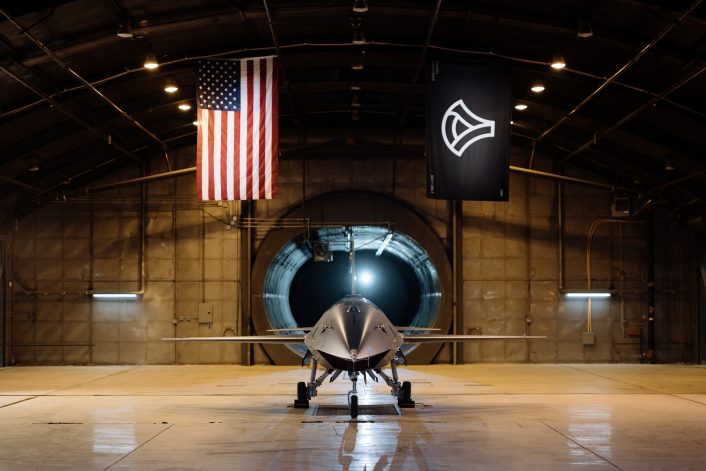
“We’re moving fast because the warfighter needs this capability,” Allvin said. “CCA is about delivering decisive advantage in highly contested environments. The program is accelerating fielding through innovative design and acquisition strategies—and both vendors are meeting or exceeding key milestones. These aircraft will help us turn readiness into operational dominance.”
“The CCA program prioritizes speed, flexibility, and cost-effectiveness,” said the DAF. This is done by leveraging open architectures and commercial technologies, which have become in recent years a mantra for the military as they allow for rapid integration, iterative upgrades, and scalable production while keeping the costs under control.
“The pace of innovation must outmatch the pace of the threat,” Allvin further added. “CCA is how we do that.”
The ground test phase will see rigorous evaluations of the YFQ-42A and YFQ-44A production representative test vehicles, focusing on propulsion systems, avionics, autonomy integration, and ground control interfaces, said the service. These assessments will validate performance, inform future design decisions, and prepare the two aircraft to move to the flight testing phase later this year.
While the Air Force did not specify when this would happen in its press releaese, Anduril mentioned in its own post on X that the YFQ-44 will fly this summer. This echoes what also Gen. Allvin mentioned when he announced the designation of the two aircraft in March 2025.

Beale AFB
Together with the announcement of the ground testing’s start, the DAF also announced that it has selected Beale Air Force Base, California, as the preferred location to host a CCA Aircraft Readiness Unit (ARU). The mission of the new ARU will be to “provide combat aircraft ready to deploy worldwide at a moment’s notice,” said the service.
In his post on X announcing the new developments of the CCA program, Gen. Allvin defined the choice of the location for the ARU as “another key step as we accelerate the capabilities our Airmen need and our nation expects.”
The DAF explained in its statement that, since the CCAs are semi-autonomous in nature, “the ARU will not have to fly a significant number of daily sorties to maintain readiness.” There is no mention of how the ARU will integrate or impact the mission of the units already at Beale, namely the 9th Reconnaissance Wing, with its U-2s, and the 940th Air Refueling Wing, with its KC-135s.
However, the DAF mentioned that the CCAs “will be maintained in a fly-ready status and flown minimally so the number of airmen required to support the fleet will be substantially lower than other weapons systems.” It can thus be assumed that the impact will be minimal and the base might have been chosen also for its high security due to the sensitive mission of the 9th RW.
The YFQ-44
After the announcement of the award of the CCA contracts, only mockups and renderings of Anduril’s design were shown to the public. The images released now provide the first look ever at the prototype of the YFQ-44.
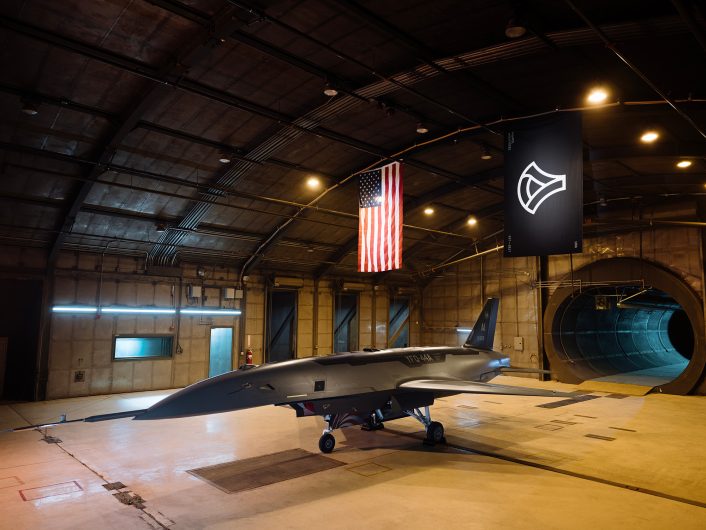
Since it has been described as a production representative test vehicle, the aircraft might have only minor modifications such as instrumentation to record test data. One of these is the flight-test data probe installed on the nose of the aircraft, commonly seen on aircraft which are undergoing the initial phases of flight testing.
A difference that immediately catches the eye, compared to the renderings previously released, is what appears to be a forward-facing camera installed on top of the nose. This might be intended to provide pilots with visual cues either for control or situational awareness, although it is unknown if this will be also a feature of the final aircraft.
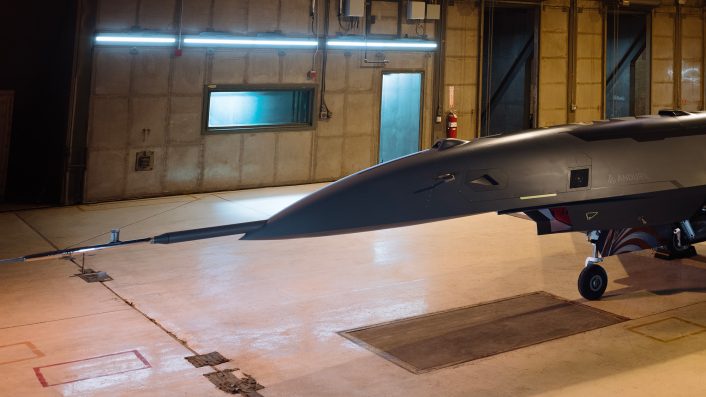
Another likely option, which would make sense given the air-to-air mission of the first CCAs, would be an InfraRed Search and Track (IRST) sensor, such as the one unveiled by Anduril in 2024, named Iris and marketed as a low-cost option for both manned and unmanned aircraft. The fairing installed on the YFQ-44 also appears similar to the one shown in the Iris’ photos released by the company.
The YFQ-42
Following the announcement of the ground testing, General Atomics Aeronautical Systems also released its own statement and a new image. David Alexander, GA-ASI President, said that the company is “on schedule to test and fly YFQ-42 in the coming months.”
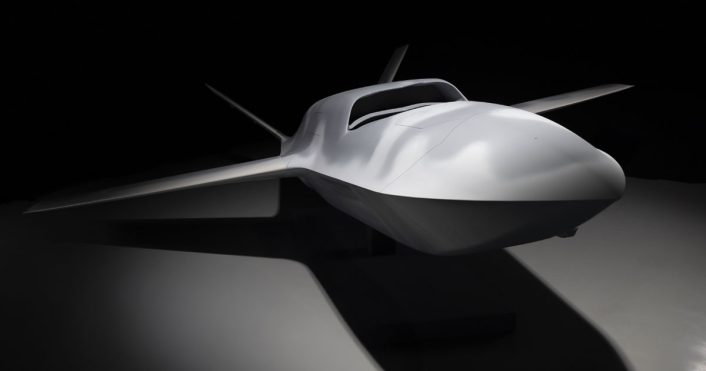
The company might unveil its aircraft this summer, as mentioned by Alexander while congratulating Beale for its selection. “I’m pleased to announce that GA-ASI will give the Beale community a sneak peek later this summer, with an exhibition of our full-scale YFQ-42 model on display at the Beale Air and Space Expo beginning June 7,” he said.
Details about the YFQ-42 are limited, but the company mentioned in the past that it will be based on the XQ-67A Off-Board Sensing Station demonstrator built for the Air Force Research Laboratory. The aircraft was mainly modified to obtain higher speeds and improved maneuverability.
Collaborative Combat Aircraft: the New Frontier of Air Dominance
The development of the autonomous systems has advanced more rapidly than expected, leading some to suggest that NGAD’s crewed fighter might not be as essential as initially planned. The combination of CCAs with manned platforms like the F-35 and F-15EX could provide a more affordable and flexible solution to achieving air superiority.
The rise of CCAs reflects the Air Force’s shifting priorities, where a system-of-systems approach may take precedence over a singular focus on a high-cost manned fighter. The combination of manned and unmanned systems also allows for greater flexibility and the potential to deploy assets in more distributed and resilient ways.
The Air Force is rapidly advancing the development of CCAs, with plans to begin deploying over 150 units in the next five years. These autonomous systems could take on a range of missions, from surveillance to direct combat, working as force multipliers in collaboration with manned platforms and taking on high-risk missions traditionally performed by manned fighters.
Unlike legacy fighters, CCAs feature modular designs, enabling rapid upgrades and streamlined maintenance. The modular design and open architecture, the latter becoming a staple in the design of modern military aircraft, allows to introduce new capabilities as they become available, allowing in turn to always field the latest technologies to keep an edge over rapidly evolving battlefields.
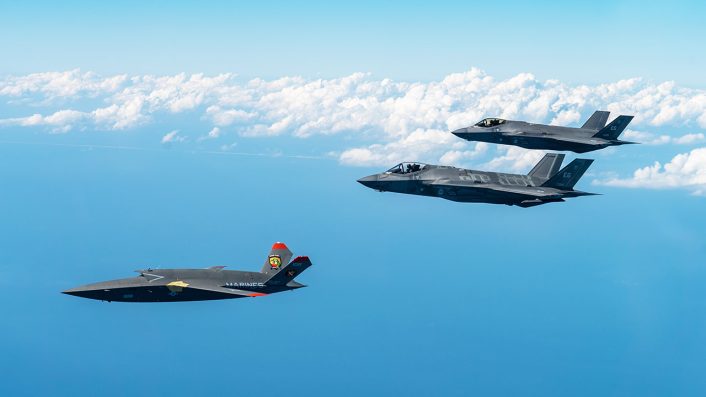
In early 2024, Anduril Industries and General Atomics were awarded contracts to design and test production-ready CCAs, marking a pivotal step in the program. Both companies are developing these unmanned aircraft to support both the upcoming NGAD fighters, as well as current F-35s and other manned aircraft, by sharing sensor data, executing coordinated maneuvers, and potentially carrying out combat roles.
In early 2025, U.S. Air Force’s Chief of Staff, General David Allvin, announced the official designation of the first two CCAs. The two aircraft by General Atomics and Anduril have been named YFQ-42A and YFQ-44A, respectively, marking the first use of the ‘Unmanned Fighter’ designation by the USAF.
“We have two prototypes of Collaborative Combat Aircraft that were on paper less than a couple of years ago,” Allvin said. “For the first time in our history, we have a fighter designation in the YFQ-42 Alpha and the YFQ-44 Alpha – maybe just symbolic, but it’s telling the world that we are leaning into a new chapter of aerial warfare.”
The Air Force is planning to field a diverse fleet of over 1,000 CCAs, designed with modular configurations for weaponry, sensor capabilities, and rapid adaptability to mission needs. One notable advancement in 2024 was the first flight of the XQ-67A, a low-cost drone designed by General Atomics under the Off-Board Sensing Station (OBSS) program, which occurred in February 2024.
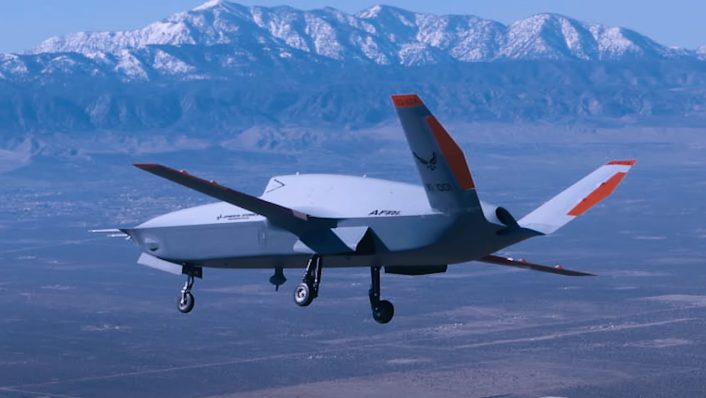
This platform, along with the earlier XQ-58A Valkyrie, demonstrates a “common chassis” concept—using shared components for various drone models to streamline production and reduce costs. This approach aims to provide a scalable, cost-effective solution for enhancing combat capacity without relying on high-cost crewed jets, which is essential given the Air Force’s budget constraints and strategic emphasis on distributed, resilient forces.
“A competitive Increment 1 production decision is expected in fiscal year 2026,” says the Air Force, “with development for Increment 2 beginning that same year to expand mission applications and integrate emerging technologies.”

